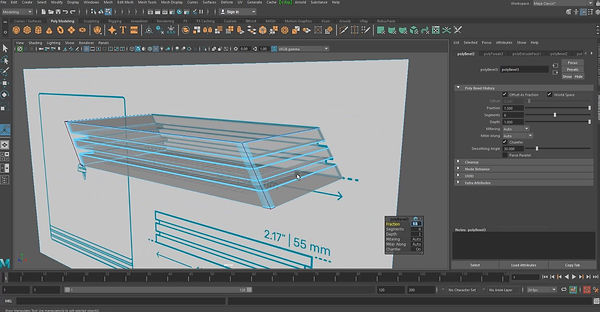Investigative Study
Deep Fakes
What is deep fake & How does it work?
Deep fake is when a piece of footage which has been edited/manipulated by artificial intelligence by someone with the similar likeness/features. For example there could be a footage of someone talking, deep fake would then be taking that footage and manipulating it to make the person say or do something different.
How is it believable?
As incredible as deep fakes can be it could also be really devastating, if someone was supposed to use it to benefit them for example in the political agenda (pretending to frame someone or make someone say something they shouldn't).
What makes deep fakes believable is that if you show a clip to someone that's deep faked, they may not be able to realize and think it's completely genuine deceiving the viewer.
Not every single deep fake flawless though, it is possible to expose a deep fake. When breaking a deep fake down frame by frame it could be noticeable. The way you'd be able to distinguish this could be down to many reasons, an example blurry frames, mouth on the character may not be moving correctly when talking; furthermore if the actor's face aren't similar to the footage you'd like to deep fake it could look uncanny.
Examples
In the world of visual effects deep fakes are used frequently, a extremely good example of this would be Fast & Furious. After the passing of Paul Walker who plays one of the leading roles in the franchise. Paul's brother 'Cody Walker' was then called to replace Paul and the deep fake technique was then used to replace Cody's face with Paul's.


Investigative Study Topic Research
Ideas on topic questions:
-
3D modelling vs 3D scanning
-
CGI modelling vs Clay modelling
-
Virtual reality vs Digital story telling
-
How close does digital simulation FX imitate the physical reality in film and does it replace practical effects as a whole?
-
How close can digital simulation imitate the physical reality?
-
How does traditional clay modelling compare to modern, 3D digital modelling?
-
Special effects in comparison to Visual effects
Essay Planing/Brainstorm
Question- Question- Importance of VFX, industry technology and software’s
Main Body= 3,500-4,000 Words (TOTAL)
Theme 1= Introduction (500 words total)
Paragraph 1: Importance/Development of VFX (250 words)
Paragraph 2: Industry technology & software (250 words)
Theme 2= VFX (1,000 words total)
Paragraph 1: Development of VFX (500 words)
Paragraph 2: Technology (500 words)
Theme 3= Practical (1,500 words total)
Paragraph 1: After Effects (750 words)
Paragraph 2: Autodesk Maya (750 words)
Theme 4= Conclusion (500 words total)
Essay
I've included my essay to the attachment to the right!
Essay Practical
As my essay was quite broad in terms of the question I chose, I decided to show an example of what could be accomplished by using some of the software's I spoke about within the essay, the 3 software I spoke on is Adobe After Effects, Autodesk Maya and Nuke.
Adobe After Effects:
In this video I show how simple it is to apply VFX onto a scene creating rain and changing from light to dark. Also show all the other many plugins to choose from.
Autodesk Maya:
Below is a piece of work I completed in my 'CGI Foundation' module using Maya.
Rendered Model



Breakdown

To begin I found some blueprints online of the dimensions of the PlayStation, I then started modeling based on the blueprint model


I then attempted to get more details into my model by adding more segments and extort polygons

I then added the SONY and PS4 logo

I then began smoothing edges and corners

I couldn't find any textures online for what I was going for so I decided to head into Adobe Photoshop and create my own textures

I then began adding materials

Adding more textures


Then I started creating UV maps

I then added the textures to my model in Maya

Adding more materials
(I also made a speed edit of me modeling the entire model so I'll add it at the end so you can see more in depth of how I applied textures/materials)

Rendering model

Nuke:
Below is a piece of work I completed in my '3D Match moving' module using Nuke to track the scene and clean up a patch. .







